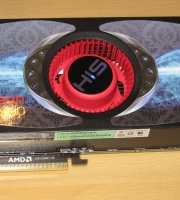
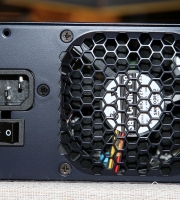
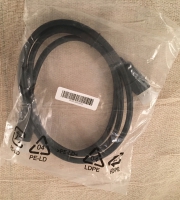
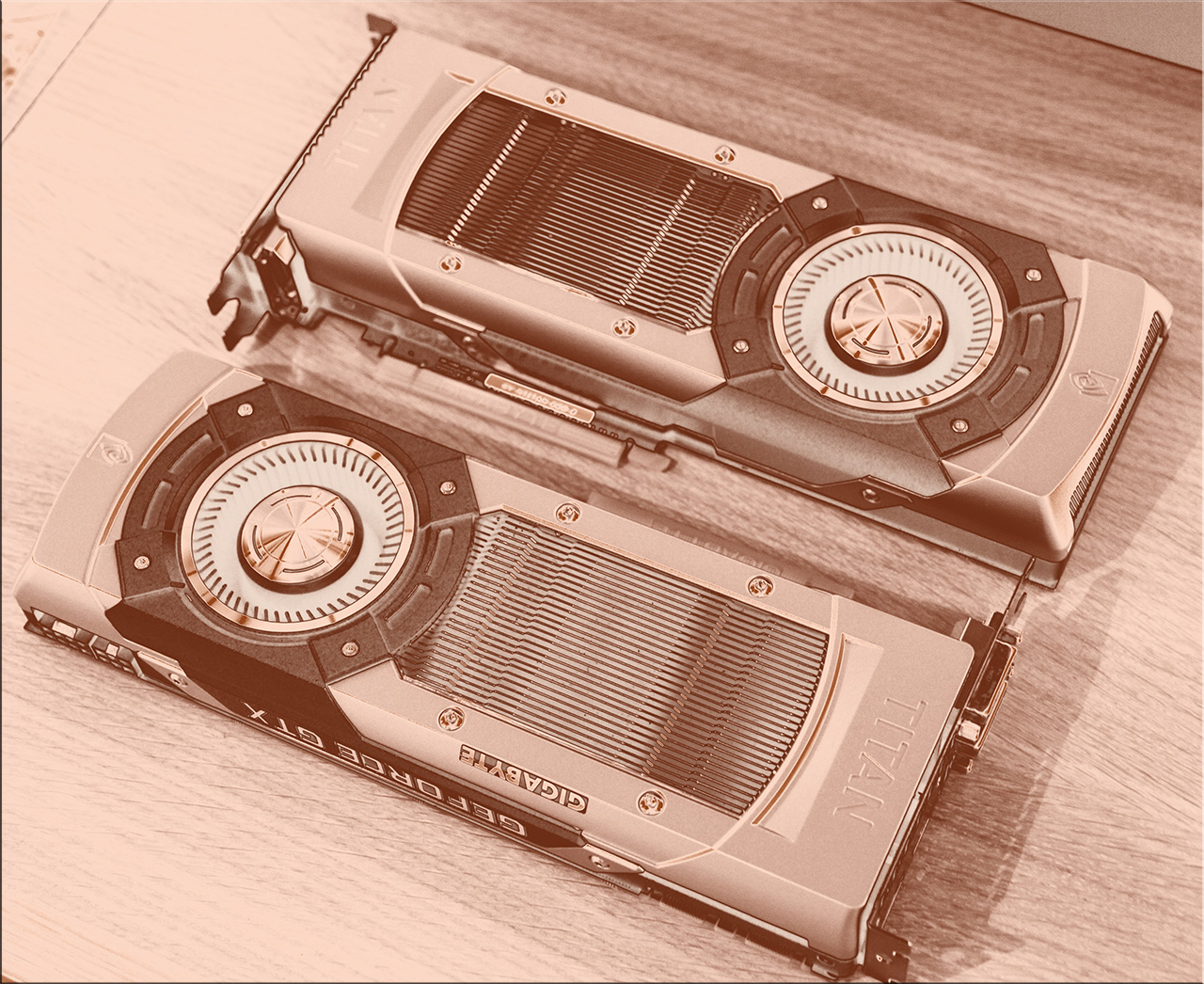
As 2012 drew to a close, the GPU rumour mill was rumbling amidst Stories that our old friend Giant Green Eyes was preparing to reveal his latest and hugely anticipated work of art.
Speculation was a little vague regarding what eventually would succeed Nvidia’s GTX 680. Initially, it appeared that the predictably titled “GTX 780” would be designed around a new chip, the GK114, a further refinement of Kepler architecture and would offer a modest performance increase of approximately 15%.
Several months of radio silence led us to February 2013, when further confusion was added by suggestions that this card would also bear the name “Titan” and in fact, feature a chip that had already made its debut in the professional market, the 7.1 billion transistor GK110.
As it turns out, the GTX 780 and the “TITAN” are actually two separate cards, the former is now set to be unleashed during summer, though which chip it will house remains uncertain. So, where does this mysterious “Titan” fit in?
Last summer, Nvidia brought us its super-expensive pixel cruncher, the GTX 690 which was the first reference deign to incorporate two unencumbered flagship GPUs on a single card. Though Its Crimson nemesis, AMD, never officially countered, several notable vendors including HIS, Club3D and Powercolor decided to exploit a potentially lucrative niche and assembled the HD 7990, which featured two bona-fide 7970’s crammed onto one PCB
Inevitably, the debate over superiority was both fervent and ultimately, inconclusive. For while a convincing case could be made for the 7990’s overall edge in performance, it is surely marred by a peak power consumption well over 200w higher than the 690, a card Nvidia expressly fine tuned for efficiency as well as raw pace.
In the quest for single GPU supremacy, a similar picture emerged. The GTX 680 has discreetly captained Nvidia’s battalion for almost a year and was a more than worthy response to AMD’s HD 7970, though barely a month passed before AMD literally pulled a fast one in the form of the 7970 “GHz Edition”. It might have been no more than a standard 7970 with increased core and memory frequencies but that proved enough to nose ahead of its rival. albeit again at the significant cost of energy efficiency.
With the Titan, it is Nvidia’s clear intention to settle both the performance and efficiency battle and produce what might possibly be the definitive Single GPU card of the 28 nm era.
The GK110 emerged in November last year and represents the pinnacle of “Kepler” architecture. As one might expect, Its design closely resembles that of GK104 chip which powered the GTX 680 , save for a clutch of crucial deviations.
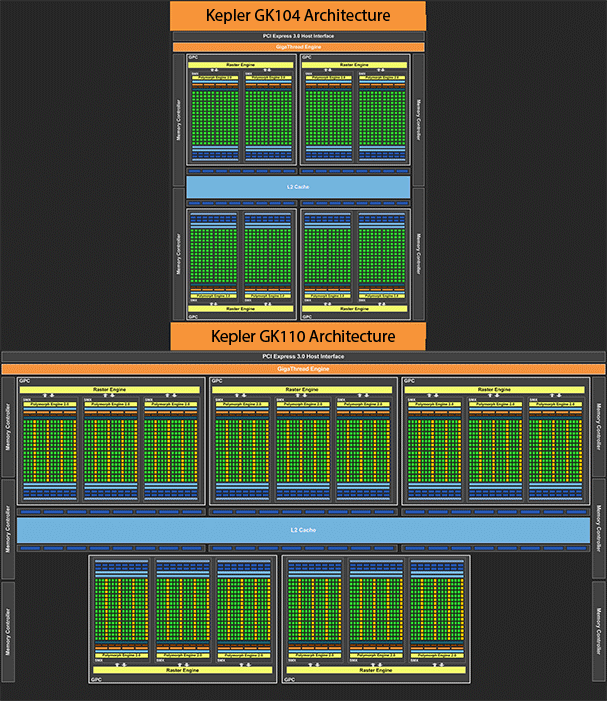
In examining the diagram above. We can instantly deduce that the basic principal of hoards of cuda cores singing in delightful unison is all but identical . The discrepancies lie mainly in the sheer numbers of Clusters, Streaming multi-processors and Cores that Nvidia has squeezed onto the die.
Whereas the GK104 played host to four GPCs (graphics processing clusters) the GK110 incorporates five. Moreover, four of these clusters contains an one additional SMX, making a total of three SMXs per cluster compared to the GK104’s two. The last cluster has had one of its SMXs disbled to improve yield rates , meaning that the GK110’s grand SMX count comes to 14 instead of 15. Nevertheless, this is almost twice as many as its little brother and should provide some impressive performance gains.
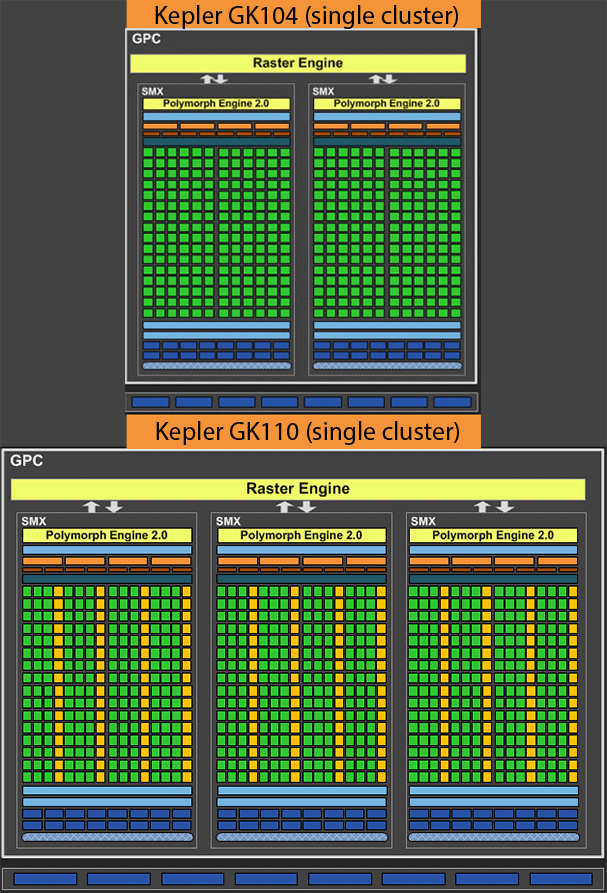
Zooming in a little reveals that the configuration within each SMX remains largely unaltered. The same number of cores (192) and texture units (16) are present in both but because of the GK110’s 6 additional SMXs, the cumulative tally come to 2688 texture units compared to the GK104’s 1536 and 224 texture units as against 128.
Perhaps the Titan’s two most note worthy enhancements lie in the one category where Nvidia could be said to have short changed its loyal fans last time around. Memory. When the 680 emerged after AMDs 7970 with just 2gb of RAM compared to its rival’s 3gb, many were concerned that this was a meagre provision in the face of rising gaming resolutions and more frequent adoption of multi-screen setups. In practice, objective critics would agree that the combination of less RAM and only a 256bit bus on which to drive it did indeed tarnish performance enough to give AMD users precious bragging rights.
The Titan makes up for lost ground with authority by bringing no less than 6gb of RAM to the table and marrying it up with the 384bit bus found on both the HD 7970 and Nvidia’s own two year old GTX 580. In terms of sheer quantity, this is 1 and 1/3 times the total memory found on a GTX 690 and equal to that on AMD’s monstrous 7990, both of which have to share their quotas between two GPUs. 6GB dedicated to one GPU? Is that the sweet smell of eye candy?!
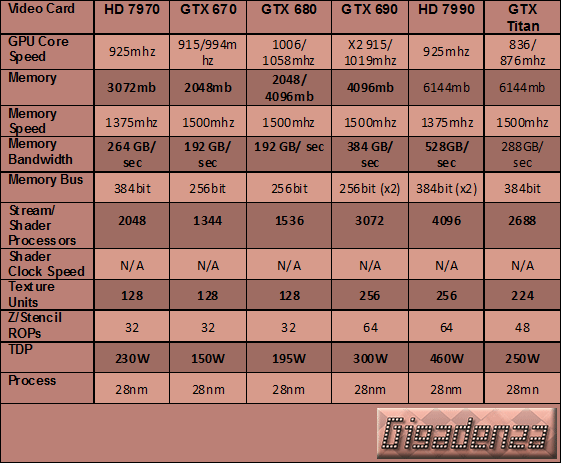
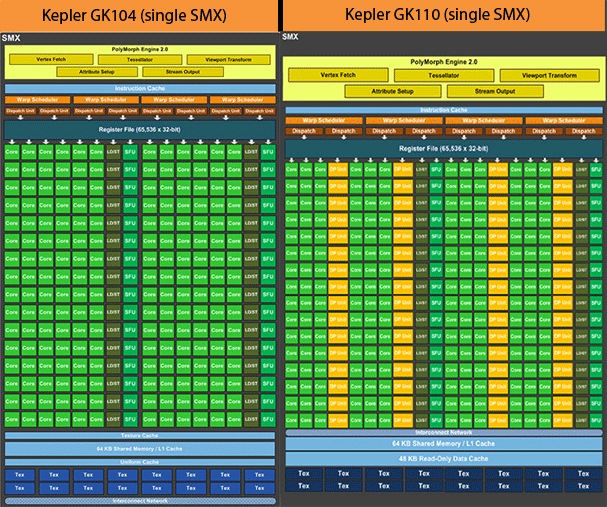
The Titan has one more trick up its sleeve, see those little yellow squares? Those are “double precision units”, 64 of them packed into each SMX compared to the 680’s 8. By default, these run at a lower clock speed than the single precision cores, 1/8th to be exact and in the case of the 680, their presence was all but redundant. The Titan however, features an additional option in the driver control panel to enable these DP cores to operate at their full speed, though with the penalty of a reduction in GPU frequency. Superfluous to gamers perhaps, but a worthy inclusion for developers, researchers, and Cuda rendering enthusiasts, and even more significant when one considers this cards’ spiritual ancestors. For In November 2012, the very same Gk110 chip lay at the heart of the Nvidia’s $3000 Tesla K20 and K20X, cards aimed squarely at the professional market.
Thus, is the GTX titan merely a cynical attempt to rebrand ageing technology whilst seduce enthusiasts into believing they have a chance to own something more exclusive than ever? Or is £830 really a damn good deal.
Here’s what the experts thought.